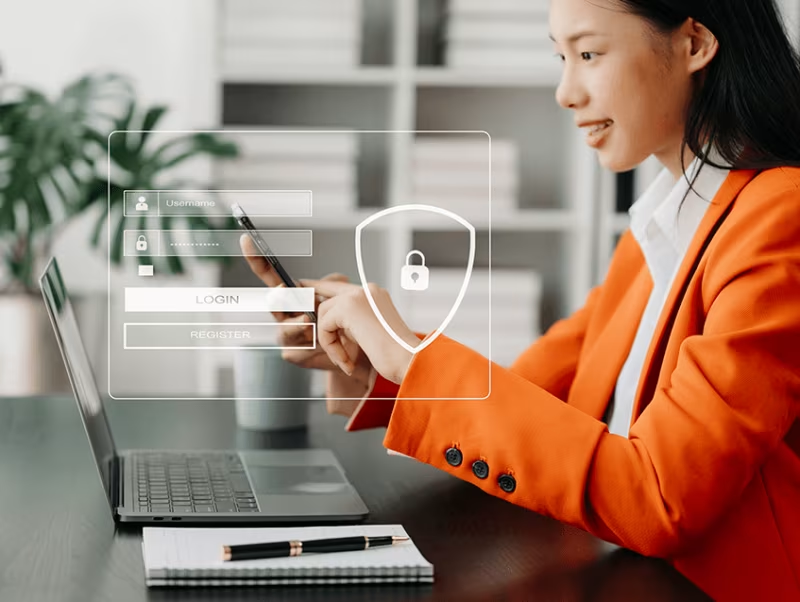Resource / Online Journal
Best Practices for Implementing IAM in Hybrid Work Environments
Adopting best practices for implementing IAM in hybrid work environments is essential for securing digital identities and protecting against cyber threats.
Published on Jun 19, 2024

As hybrid work environments become the norm, the challenge of securing digital identities and access grows increasingly complex. To address these challenges, organizations must adopt best practices for implementing IAM in hybrid work environments. This approach ensures that both remote and on-site employees can access the necessary resources securely, mitigating risks associated with unauthorized access and data breaches.
Understanding the Hybrid Work Environment
A hybrid work environment combines remote and on-site work, offering employees flexibility while maintaining business continuity. While this model provides numerous benefits, it also introduces unique security challenges. Traditional security measures designed for centralized, on-premises networks are often inadequate for a dispersed workforce. This is where Identity and Access Management (IAM) becomes crucial.
IAM systems manage digital identities and regulate access to resources, ensuring that the right individuals have access to the right resources at the right times for the right reasons. Implementing IAM effectively in a hybrid work environment requires a thoughtful approach that addresses both security and usability.
Best Practices for Implementing IAM in Hybrid Work Environments
Adopt Zero Trust Principles: A zero-trust security model assumes that threats can come from both inside and outside the network. This approach requires verification for every access request, regardless of its origin. Implementing Zero Trust principles involves continuously validating the identity of users and devices, enforcing least privilege access, and monitoring all activities for suspicious behavior. By integrating Zero Trust with IAM, organizations can enhance security in hybrid work environments.
Utilize Multi-Factor Authentication (MFA): MFA is a fundamental aspect of IAM that adds an extra layer of security by requiring multiple forms of verification. In a hybrid work environment, where employees may access corporate resources from various locations and devices, MFA significantly reduces the risk of unauthorized access. Organizations should mandate MFA for all access to critical systems and data, ensuring that even if one credential is compromised, additional authentication factors are required.
Implement Role-Based Access Control (RBAC): RBAC is essential for managing access in a hybrid work environment. By assigning permissions based on user roles rather than individual identities, RBAC simplifies the process of granting and revoking access. This ensures that employees have only the access necessary to perform their job functions, reducing the risk of over-privileged accounts. Regular reviews and audits of role assignments help maintain alignment with current job responsibilities.
Leverage Cloud-Based IAM Solutions: Cloud-based IAM solutions offer scalability and flexibility, making them ideal for hybrid work environments. These solutions enable organizations to manage identities and access across diverse systems and platforms, providing a unified approach to security. Cloud-based IAM also supports seamless integration with other cloud services, enhancing overall efficiency and security.
Ensure Strong Password Policies: While passwords alone are not sufficient to protect against sophisticated cyber threats, enforcing strong password policies remains a vital part of IAM. Organizations should require complex passwords, and regular updates, and discourage password reuse across multiple accounts. Implementing password managers can help employees generate and store unique passwords securely, further enhancing security in hybrid work environments.
Monitor and Analyze User Behavior: Continuous monitoring and analysis of user behavior are critical for detecting and responding to potential security threats. IAM systems equipped with behavioral analytics can identify anomalies, such as unusual login times or access patterns, that may indicate compromised accounts. By promptly addressing these anomalies, organizations can prevent security incidents before they escalate.
Automate Identity Lifecycle Management: Automating identity lifecycle management ensures that access rights are promptly adjusted as employees join, change roles, or leave the organization. Automated workflows streamline the processes of provisioning, modifying, and de-provisioning access, reducing the risk of orphaned accounts and ensuring compliance with security policies. This is especially important in hybrid work environments where employee roles and locations can frequently change.
Educate and Train Employees: Employee awareness and training are crucial components of an effective IAM strategy. Organizations should educate employees about the importance of IAM and their role in maintaining security. Training programs should cover topics such as recognizing phishing attempts, secure password practices, and the use of MFA. Regular training ensures that employees remain vigilant and informed about the latest security practices.
Regularly Audit and Update IAM Policies: Regular audits of IAM policies and practices are essential to maintaining security and compliance. Organizations should routinely review access controls, authentication methods, and user roles to ensure they align with current business needs and security standards. Updating IAM policies in response to new threats and regulatory requirements helps organizations stay ahead of potential vulnerabilities.
Integrate IAM with Security Information and Event Management (SIEM) Systems: Integrating IAM with SIEM systems enhances the overall security posture by providing comprehensive visibility into user activities and potential threats. SIEM systems aggregate and analyze security data from various sources, enabling real-time threat detection and response. By correlating IAM data with other security events, organizations can gain deeper insights into potential risks and take proactive measures to mitigate them.
Conclusion
In conclusion, adopting best practices for implementing IAM in hybrid work environments is essential for securing digital identities and protecting against cyber threats. By embracing Zero Trust principles, utilizing MFA, implementing RBAC, leveraging cloud-based solutions, and ensuring strong password policies, organizations can create a robust IAM framework that meets the unique challenges of a hybrid work model. Continuous monitoring, automation, employee training, regular audits, and integration with SIEM systems further enhance security and compliance. As hybrid work environments continue to evolve, staying proactive and vigilant with IAM practices will be crucial for safeguarding organizational resources and maintaining business continuity.
Recommended articles


IAM in Education: Safeguarding Student and Faculty Data in the Digital Classroom
Take Your Identity Strategy
to the Next Level
Strengthen your organization's digital identity for a secure and worry-free tomorrow. Kickstart the journey with a complimentary consultation to explore personalized solutions.